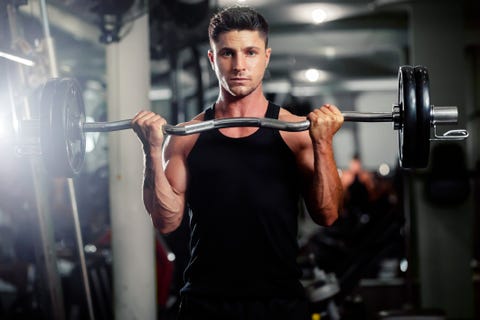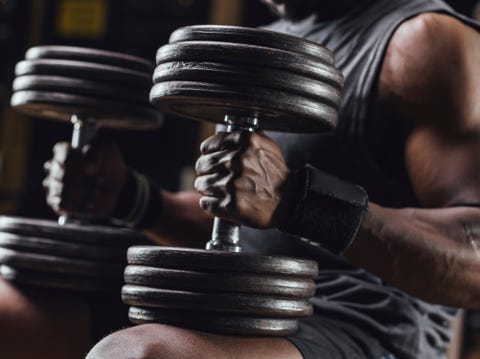
If you’ve spent any time in a weight room, you’ve probably heard the term “superset” thrown around.
If you’re not quite sure what that means, you might have the impression that the word’s referring to some type of all-powerful exercise that can morph you into a muscled caped crusader. That’s not quite right — although if you use supersets correctly, you could wind up looking superhero jacked as a result of your efficient, hard work.
What Is a Superset?
A superset refers to two exercises performed back-to-back, with little or no rest in between. The practice can help to cut your workout time roughly in half, since you’re only resting once you’ve finished two moves, rather than taking time between every single set for just one exercise. If creating quick workouts meant to build muscular endurance and metabolic conditioning in the weight room is your goal, supersets will be your best friend.
Here’s an example of a basic lower body superset:
You can use supersets in the broadest sense and stack any two moves to simply cut down on your workout time. If you’re extra savvy, you can select complementary exercises that target opposing muscle groups in order to make your workout more efficient.
You might, say, aim at combining moves where you push with moves where you pull; an example of this would be an overhead press with a pullup. You’re resting the muscles that you depend on to push the barbell while you’re doing the pullups, and vice versa, so there’s very little wasted time involved — with all the work you’d get by performing the moves in a more standard format.
How Should I Use Supersets?

The most obvious time to implement supersets is when you want to cut down your workout time. Be careful to remember that not every move is ideal to be part of a pair, however.
“When I do use supersets in body part workouts, I let them come into play after getting any ‘heavy’ work out of the way,” says Men’s Health Fitness Director Ebenezer Samuel, C.S.C.S. “I wouldn’t want to bench heavy and [then] row.”
While it’s not a bad thing to value your time and program your workouts to be as quick and efficient as possible, you should never design a routine built around heavy lifts with speed as your number one priority. If you’re going to perform compound exercises with large loads, you’ll need proper rest time between sets to fully recover for the next set. Sometimes, deciding which moves you’ll be able to perform to the best of your ability in the superset format is something you need to determine on your own.
“Part of that is mental,” continues Samuel. “Can you really focus on your technique and neural drive while doing a heavy bench, then transitioning to a heavy row? Not sure [if I could], and I’d contend there are diminishing returns there, so I generally don’t recommend or program that.”
Instead of front loading the big lifts like back squats, bench presses, and deadlifts with accessory moves that will ultimately sap your performance, give them your full attention. Then, partner up corresponding exercises that don’t require as much rest for recovery.
“My standard chest workout goes with a flat press of some sort, followed by an incline press,” Samuel says. “Then I superset a fly and a focus-style pushup — [like] an archer or decline with a squeeze.”
When Should I Use Supersets?

Your goals for training should also factor into your decision to use supersets. The method is not quite a one-size-fits-all time saver.
“If you’re aiming for size or working to improve overall power via low-rep patterns, they may not serve you well,” Samuel advises.
This comes back to recovery. If you’re training to build raw strength with a goal to lift as much weight as possible, you’re going to need to rest to prep for the next set. The National Strength and Conditioning Association (NSCA) recommends rest periods between 2 to 5 minutes for 1 to 5 reps of >85 percent of your 1 rep max (1RM) when training to build strength, so you’ll only hurt your chances of finishing your lifts if you spend rest periods pumping up another muscle group.
If you’re looking to induce muscle growth through hypertrophy, the cellular process through which your muscle repairs itself, supersets might not be your absolute best bet, either. The NSCA recommended splits for that goal is 6 to 12 reps at 65 to 85 percent of 1RM, with 60 second rest periods. You can program a superset to time up for that format — and many coaches do recommend supersets for hypertrophy, including the NCSA itself — but you might want to utilize the rest period more carefully for maximal performance instead.
To really pound a muscle group when you’re training for volume, you can also try compound sets, which pair two exercises within the same muscle group together. Rest for a minute between your compound sets, and you can kick-start muscle growth for super gains within the recommended framework for hypertrophy.
Source: Read Full Article
